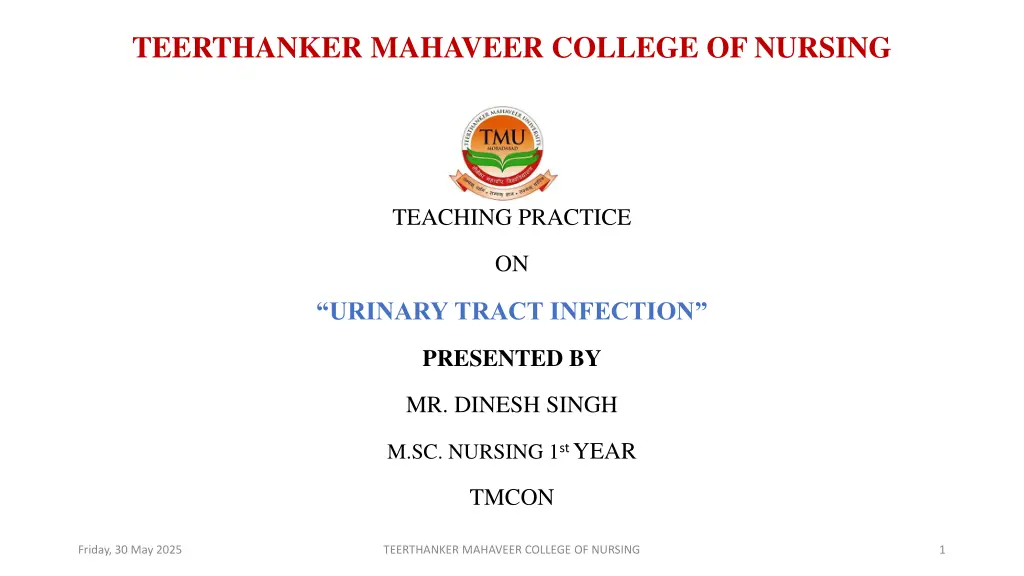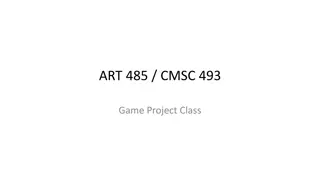
Understanding Urinary Tract Infections: Causes, Symptoms, and Management
Learn about urinary tract infections (UTIs) - their types, causes, symptoms, and medical management. UTIs are more common in women and can lead to pain, urgency, incontinence, and other discomfort. Discover the important information you need to know about UTIs to stay informed and seek appropriate treatment.
Download Presentation

Please find below an Image/Link to download the presentation.
The content on the website is provided AS IS for your information and personal use only. It may not be sold, licensed, or shared on other websites without obtaining consent from the author. If you encounter any issues during the download, it is possible that the publisher has removed the file from their server.
You are allowed to download the files provided on this website for personal or commercial use, subject to the condition that they are used lawfully. All files are the property of their respective owners.
The content on the website is provided AS IS for your information and personal use only. It may not be sold, licensed, or shared on other websites without obtaining consent from the author.
E N D
Presentation Transcript
TEERTHANKER MAHAVEER COLLEGE OF NURSING TEACHING PRACTICE ON URINARY TRACT INFECTION PRESENTED BY MR. DINESH SINGH M.SC. NURSING 1st YEAR TMCON Friday, 30 May 2025 TEERTHANKER MAHAVEER COLLEGE OF NURSING 1
INTRODUCTION Urinary tract infection can be divided into upper urinary tract infections, which involves the kidneys (pyelonephritis) and lower urinary tract infections, which involve the bladder (cystitis), urethra (urethritis) and prostate (prostatic).
DEFINITION A urinary tract infection, or UTI is an infection in any part of the urinary system, which includes the kidneys, bladder, ureters and urethra.
INCIDENCE More common in women than man.
ETOLOGY Bacterial infection (mostly E.coli) 80% Candida infection Sexual intercourse Tight and synthetic clothing Indwelling catheters Upper urinary tract disease Obstructive abnormalities (strictures, prostatic hyperplasia) Calculus Under-treated cystitis
PATHOPHYSIOLOGY Bacteria or fecal organisms enters to urethra and bladder from perineum Attach and colonize the epithelium of urinary tract Avoid host defense mechanisms Initiate inflammation
CLINICAL MANIFESTATION Pain in the side (flank), abdomen and pelvic area Pressure in the lower pelvis Frequent need to urinate (urgency) Urgent need to urinate (urgency) Incontinence (urine leakage) Painful urination (dysuria) Blood in urine (hematuria) Abnormal urine colour (cloudy urine) and strong or foul-smelling urine.
OTHER SYMPTOMS Pain during sex Penis pain Fatigue Fever Vomiting
MEDICAL MANAGEMENT Antibiotics:- are medicines that kill bacteria and fight an infection. Antibiotics are typically used to treat urinary tract infections. Example:- Bactrim, cotrimazine (trimethoprim/sulfadiazine) Other are Ampicillin/Amoxicillin Doxycycline Ciprofloxacin Norfloxacin
SURGICAL MANAGEMENT Surgical management is necessary than any congenital anomalies or BPH (benign prostatic hyperplasia) is there.
NURSING MANAGEMENT Assessment 1. Assess risk factors for development of cystitis. 2. Take a detailed history. 3. Collect urine culture and sensitivity specimen.
NURSING DIAGNOSIS 1. Acute pain related to irritation of bladder and urethral mucosa. 2. Altered urinary pattern related to irritation of bladder mucosa. 3. Risk of infection related to urinary stasis, pregnancy and risk factors. 4. Knowledge deficit related to prevention, medications, hygiene and fluid intake.
REFERENCE Lewis Dirksen Heitkemper Bucher, textbook of medical surgical nursing second south Asia edition, volume 1 page no. Brunner and Suddarth s textbook of medical surgical nursing 13th south Asia edition, volume-2 page no 1532 P.K. Panwar, textbook of medical surgical nursing 4th edition page no.







